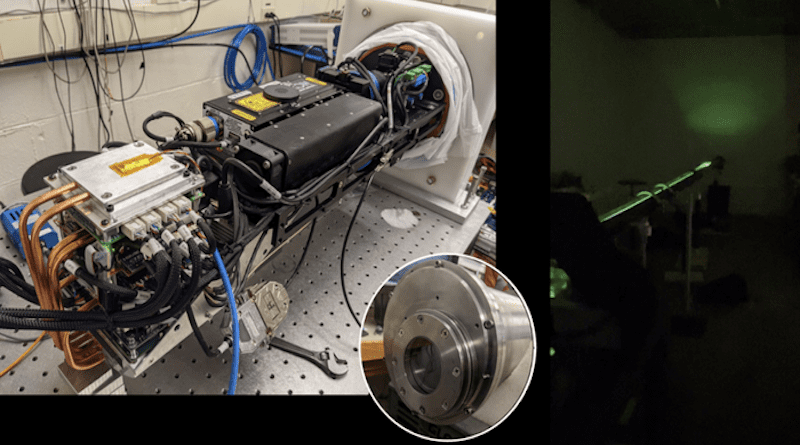InVADER Mission To Test Robotic Laser Divebot An Deep-Sea Expedition
A team of scientists and engineers from the SETI Institute, Impossible Sensing, NASA JPL, and other institutions will test their innovative robotic laser system on a deep-sea expedition aboard the E/V Nautilus. The mission, called InVADER (In-situ Vent Analysis Divebot for Exobiology Research), aims to advance technologies to explore, characterize and sample the seabed here on Earth. In particular, InVADER’s Laser Divebot will find marine minerals and catalog biodiversity in the seabed faster and more affordably than ever.
“Our technology will revolutionize oceanography like digital photography disrupted film photography,” said Pablo Sobron, SETI Institute research scientist and project lead. “Scientists will no longer have to collect and ship samples to a lab and wait weeks for the results. InVADER will do it in just a few hours and with zero environmental impact. This approach will allow scientists to learn more about the ocean much faster, which is essential for protecting it.”
If successful, such technologies could be used to explore ocean worlds in our solar system, such as Europa and Enceladus, to help us understand whether they could be habitable and host life.
The E/V Nautilus expedition will, for the first time, deploy InVADER’s Laser Divebot in the Kingman Reef and Palmyra Atoll region from May 16 to June 14, 2023. These waters host some of the most pristine marine ecosystems on Earth. In addition to providing a site for testing technologies for planetary exploration, the team will contribute to a better understanding of the deep-water resources and biodiversity of never-before-seen seamounts and habitats, which will inform the management and science needs of the region.
The Laser Divebot will be mounted on ROV Hercules. The pair will map areas of the seafloor with remarkable speed and accuracy. The heart of the innovation is a cutting-edge laser spectroscopy suite that brings long-range and ultra-high sensitivity laser Raman and laser fluorescence spectroscopy to the seafloor for the first time.
The team plans to perform multiple dives with the Laser Divebot during the expedition and create rapid compositional maps in-situ using its state-of-the-art laser spectroscopy suite. These maps will provide unprecedented insights into the seabed’s mineral resources and microbial metabolisms. The team will also bring back fluids and mineral samples for further lab analysis.
The InVADER project is funded by a NASA Planetary Science and Technology from Analog Research (PSTAR) grant. Dr. Pablo Sobron, a SETI Institute physicist and Founder of Impossible Sensing, and Dr. Laurie Barge, a NASA JPL research scientist, lead the project. The project also involves collaborators from the University of Washingon’s Applied Physics Laboratory, the University of Hawai’i, the University of Southern California, the State University of New York—Stony Brook, the University of Shouthampton, the Lunar and Planetary Institute, Oak Crest Institute of Science, Honeybee Robotics, Impossible Sensing, and the Geological Survey of Belgium.
The NOAA’s Ocean Exploration Consortium Initiative and the Bureau of Ocean Energy Management’s Marine Minerals Program provided additional funding to develop and deploy the technology.

